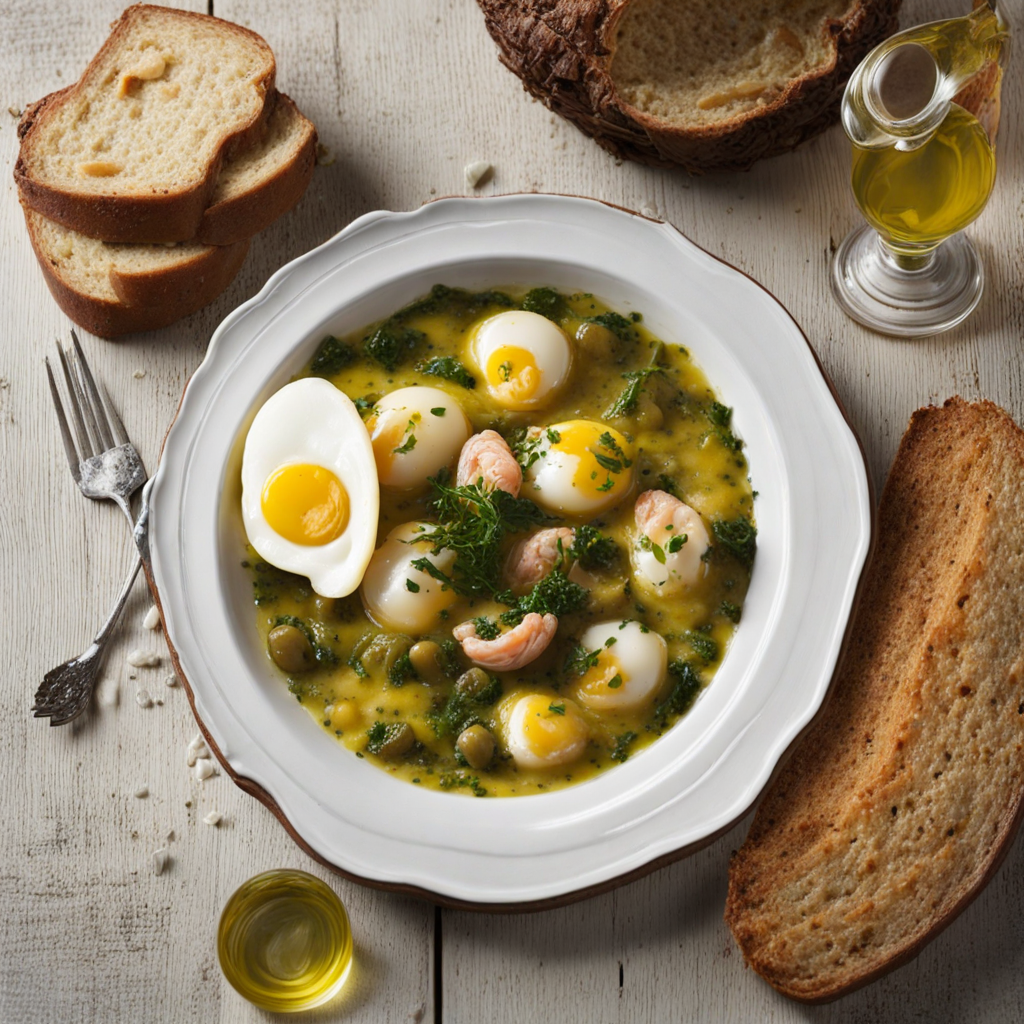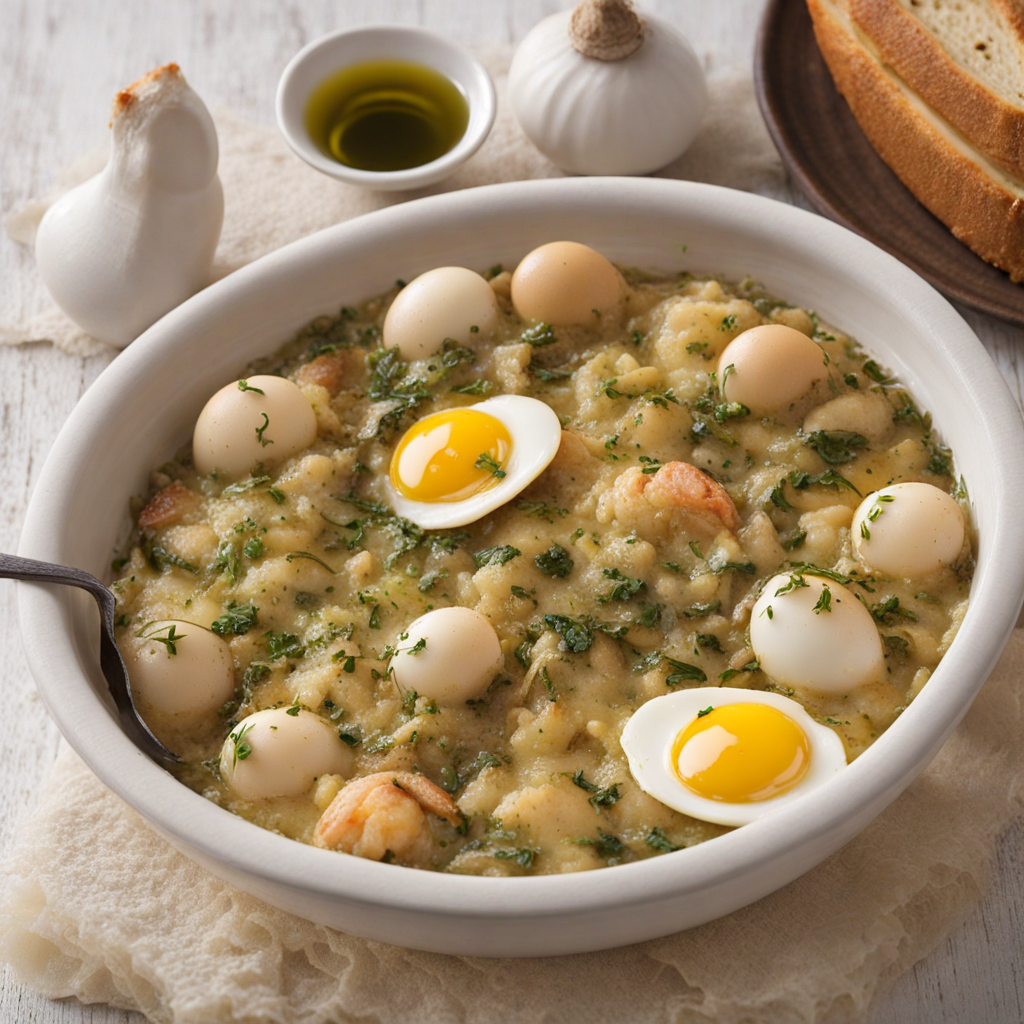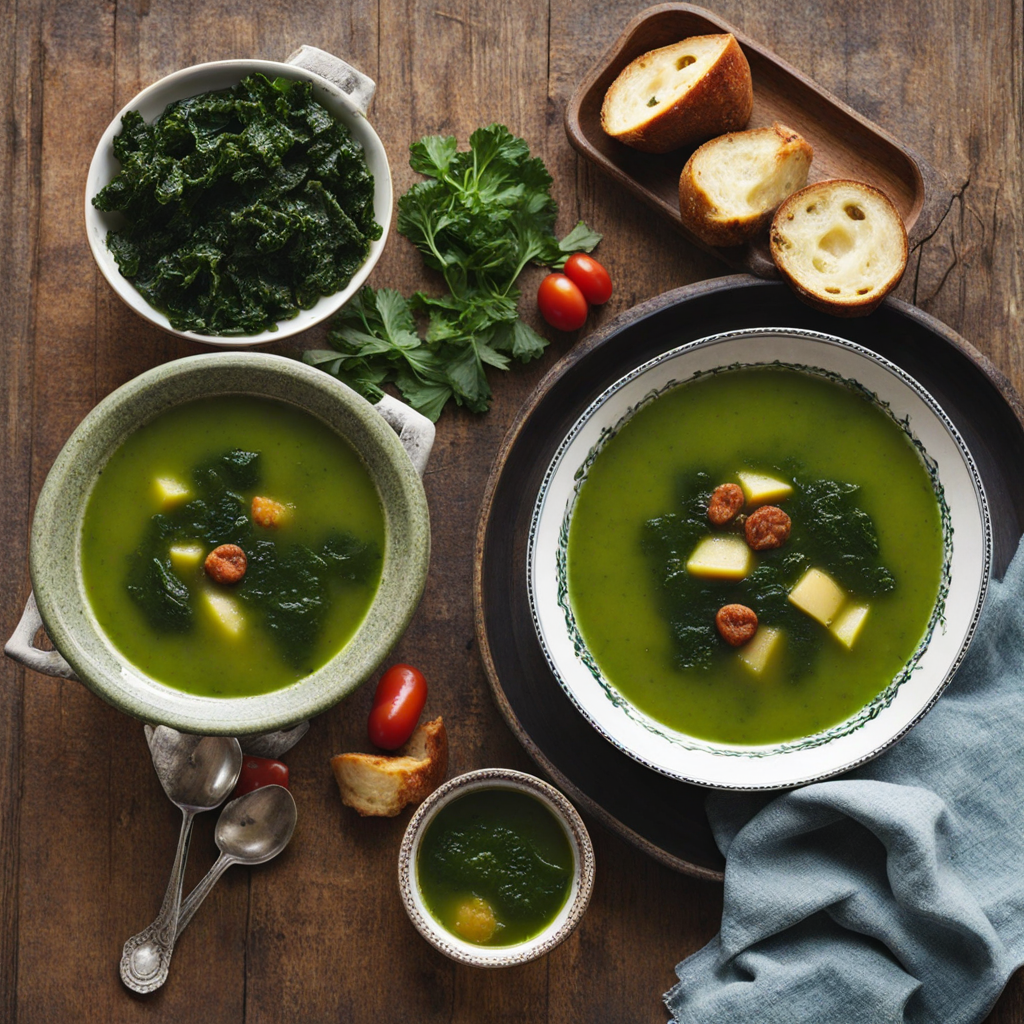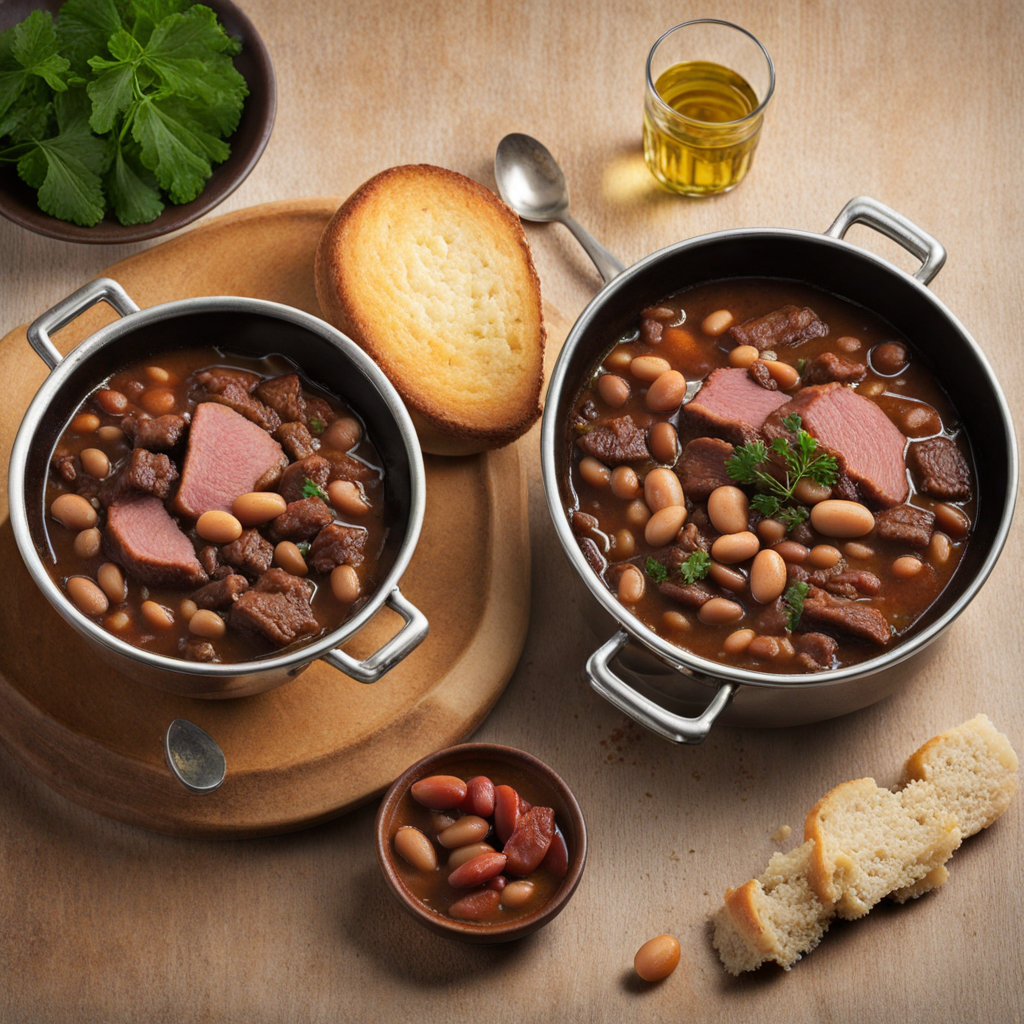Açorda
Açorda is a traditional Portuguese dish that perfectly embodies the rustic charm of the country’s culinary heritage. At its core, it consists of a bread-based soup, typically made with stale bread, which is soaked in a flavorful broth, often enriched with garlic, olive oil, and fresh herbs. The texture is both hearty and comforting, with the bread absorbing the savory liquid, creating a delightful amalgamation of flavors. Depending on the region, you may find variations that include seafood, such as shrimp or cod, which enhance the dish’s umami profile and bring a coastal essence to every bite. The aroma of Açorda is intoxicating, primarily due to the generous use of fresh coriander or parsley, which adds a fragrant note that complements the rich taste of the broth. The dish is usually served warm, allowing the flavors to meld beautifully. The simplicity of the ingredients belies the depth of flavor achieved through careful preparation and the use of high-quality olive oil. A sprinkle of paprika or a drizzle of additional olive oil just before serving can elevate the dish even further, providing a touch of color and an extra layer of complexity. Açorda is often enjoyed as a comforting meal on its own, but it also pairs wonderfully with side dishes like grilled fish or roasted vegetables. Each spoonful offers a taste of Portugal's rustic countryside, reflecting the country's love for using fresh, local ingredients to create satisfying, soul-warming dishes. For those seeking a new culinary adventure, Açorda is a delightful introduction to the heart of Portuguese cuisine, inviting you to savor the rich history and tradition that each bowl contains.
How It Became This Dish
Açorda: A Culinary Journey Through Portugal's History Origin and Early Beginnings Açorda, a traditional Portuguese dish, embodies the essence of the country's culinary landscape. Its roots can be traced back to the Moorish influence in the Iberian Peninsula, which introduced various spices and cooking techniques that have shaped Portuguese cuisine. The name "açorda" itself is derived from the Arabic word "al-ḥaṣīḍ," which refers to a type of bread soaked in water. This connection highlights the dish's deep historical ties to the Arab presence in Portugal from the 8th to the 12th centuries. Historically, açorda was a humble dish, made primarily from stale bread, garlic, olive oil, and water, making it a staple in the diets of the poorer classes. This basic combination of ingredients was not only economical but also practical, allowing families to avoid wasting bread, a precious commodity. The dish's simplicity belies its rich flavors and textures, which have evolved over the centuries. Cultural Significance Açorda is more than just a dish; it is a cultural symbol of Portuguese identity and resilience. It reflects the resourcefulness of the Portuguese people who, throughout history, have had to make the most of their available resources. The dish is often associated with communal gatherings and home cooking, reinforcing the notion of family and togetherness. In many Portuguese households, making açorda is a ritual that brings families together, often passed down from generation to generation. The dish is particularly significant in the Alentejo region, where it is considered a comfort food. Here, açorda is often prepared with regional variations, such as açorda de marisco (seafood açorda) or açorda de bacalhau (salted cod açorda), showcasing the local bounty of the ocean and the land. In coastal areas, it may include fresh fish or shellfish, while inland versions might feature seasonal vegetables or meats, demonstrating the versatility and adaptability of the dish. Development Over Time As Portugal's culinary landscape evolved, so too did açorda. The 16th century marked a period of exploration and trade, which brought new ingredients and flavors to the Portuguese table. The introduction of spices and herbs from the New World, particularly during the Age of Discoveries, transformed açorda into a more complex and flavorful dish. Ingredients such as coriander, cumin, and paprika began to feature prominently, giving the dish a distinctive taste that reflects the country's maritime history. By the 19th century, açorda had firmly established itself in Portuguese cuisine, appearing in cookbooks and culinary literature. The renowned Portuguese cookbook "Cozinha Tradicional Portuguesa," first published in the 19th century, included various recipes for açorda, showcasing its importance in the national culinary canon. This period also saw the rise of regional variations, with each area of Portugal putting its own spin on the dish, influenced by local ingredients and culinary traditions. In contemporary Portugal, açorda continues to thrive as a beloved comfort food. Chefs and home cooks alike celebrate its versatility by experimenting with ingredients while respecting traditional methods. Modern interpretations might incorporate gourmet touches, such as the use of artisanal breads, high-quality olive oils, and fresh herbs, while still honoring the dish’s rustic roots. The rise of the farm-to-table movement has also contributed to a renewed interest in açorda, as chefs seek to highlight seasonal and local ingredients. Açorda's Modern Revival The 21st century has witnessed a resurgence of interest in traditional Portuguese dishes, including açorda. As globalization has increased access to information and culinary techniques, Portuguese chefs have begun to embrace their culinary heritage, revitalizing classic recipes and reintroducing them to a new generation. Food festivals, cooking shows, and online platforms have played a significant role in promoting traditional Portuguese cuisine, with açorda often taking center stage. Restaurants across Portugal now feature açorda on their menus, showcasing its versatility and adaptability. Some establishments offer innovative interpretations, such as açorda served as a sophisticated starter with gourmet toppings, while others pay homage to its rustic roots by preparing it in traditional ways. This balance between tradition and innovation has helped to keep açorda relevant in a rapidly evolving culinary landscape. In addition to its culinary significance, açorda has also become a cultural ambassador for Portugal. As the world becomes more interconnected, travelers seeking authentic cultural experiences often turn to traditional foods as a way to connect with local customs and traditions. Açorda, with its rich history and comforting flavors, serves as a delicious introduction to Portuguese culture, inviting those who try it to explore the country’s vibrant culinary scene. Conclusion In conclusion, açorda is a dish steeped in history, culture, and tradition. From its humble beginnings as a practical way to use stale bread to its status as a beloved comfort food, açorda reflects the resilience and resourcefulness of the Portuguese people. Its evolution over time, influenced by historical events, regional variations, and modern culinary trends, showcases the adaptability of this iconic dish. As açorda continues to evolve and inspire chefs and home cooks alike, it remains a testament to Portugal's rich culinary heritage. Whether enjoyed in a rustic family kitchen or a modern restaurant, açorda embodies the spirit of Portugal—simple yet profound, traditional yet contemporary. Its enduring presence on Portuguese tables serves as a reminder of the importance of food in connecting people to their history, culture, and each other.
You may like
Discover local flavors from Portugal







